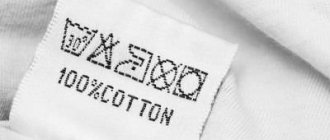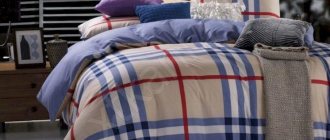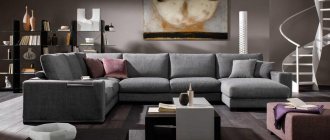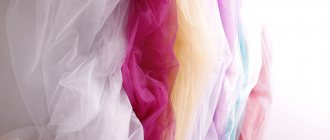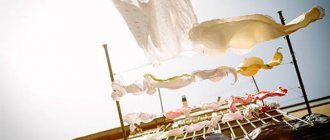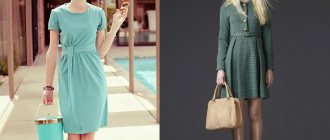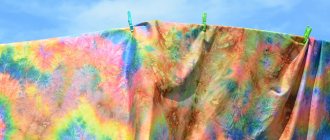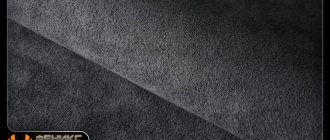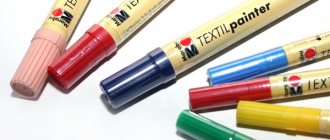Content
- When are car covers required and what kind?
- What material is best for preserving the presentation of car seats?
- How to choose car seat covers
- Table: comparison of artificial leather and eco-leather
- Driver's seat cover
- Interior design and car covers - advice from experts
Before ordering car seat covers, you need to decide the purpose of this event.
New textiles in the car may be required to solve a specific problem for the driver. In this case, you need to consider other options; they may be less expensive. If you want renewal, originality, or want to stand out, ordering car covers turns into a creative process.
It can be difficult to please a customer. There are hundreds of options for this case. There are budget and luxury materials for car covers to choose from. The customer is ready to overpay if the color and design suit his taste.
Fabric options
| Material | Upholstery level | Texture | Flaw |
| Carpet | Base | fleecy | Fibrous contaminants stick. |
| Velours | average | fleecy | Over time, the fibers become bald. |
| Leatherette | Average | Glossy | At elevated temperatures it sticks to the body. |
| Vinyl | Average | Glossy | At elevated temperatures it sticks to the body. |
| Faux suede | Average | Velvety | Gets greasy, dirty |
| Flock | Average | fleecy | Comfort depends on temperature |
| Polyester | Medium or basic | Smooth | Poor breathability |
| Jacquard | Average | Smooth with a pattern | Poor breathability |
| Tweed | Medium and premium | fleecy | Susceptible to contamination |
| Genuine Leather | Premium | Smooth | Can stick to the body |
| Natural suede | Premium | Velvety | Susceptible to contamination |
| Alcantara | Premium | Velvety | High price |
Fabric for car seats comes in a variety of textures and colors:
- velor, corduroy, plush, flock;
- polyester, tweed and jacquard;
- knitted fabric;
- leatherette;
- Alcantara;
- Genuine Leather.
The velvety, fleecy upholstery fabric is pleasant to the touch and creates a feeling of comfort. These are velor, corduroy, plush, flock. They must be special, automotive, made.
In our country, velor for covering car seats is very popular. To make the interior look modern, you need to choose interesting colors or combine fleecy material for the seat and back with smooth side parts.
Smooth fabric for car seat covers does not collect dust. It is easier to clean stains. This property must be taken into account if children are often carried in the car. For a large family car, polyester, tweed and jacquard are suitable. Polyester is a versatile and extremely durable material. It is easy to remove dirt from it, it dries quickly after cleaning, and does not shrink when washed. Disadvantages: poor breathability and electrostaticity.
Jacquard is a plain or colored fabric with a pattern that creates an interweaving of threads. Upholstery fabrics are made from durable synthetic fibers. Tweed is similar to suit fabric, but car fabric is woven by adding strong synthetic threads to wool yarn. Like any wool, it is slightly scratchy to the touch.
Knitted fabric is better than dense fabric, it allows air to pass through, and can be easily stretched onto a chair of any shape. It is often combined with “solid” materials.
Leatherettes look great in the car interior. Manufacturers report that their products contain micropores and do not emit harmful substances. All types of artificial leather and suede are offered in perforated versions. Perforated inserts are made on the seat and back in places adjacent to the body.
The most expensive fabric for upholstery is Alcantara. Externally, auto fabric resembles high-quality suede. Developed by order of Japanese automakers. It is made from polyester and polyurethane fibers using special technology, and its properties are close to natural materials. It is counterfeited more often than others. They pass off regular faux suede as Alcantara.
Genuine leather is a material for luxury car interiors. The high cost is due to the fact that not all parts of the tanned skins can be used for upholstery of car seats.
You may be interested in: Perforated leather
Car seat trim options
After the fabric for the upholstery is selected, the type of internal lining is selected. This is a conditional division that helps customers and performers decide on a budget.
When are car covers required and what kind?
First, let's look at when car seat covers are required over the factory upholstery. These are not luxury cars in which the seats are scary to look at. There is high-quality upholstery with a huge margin of safety, resistant to any dirt.
You may be interested in: Eco-leather cases with diamonds
Covers to protect against dust and germs are really unnecessary and spoil the interior design.
Leather and suede-imitating Alcantara retain a presentable appearance for decades and do not require regular cleaning.
If a stain needs to be removed, it will be done at an expensive car wash using professional means. The cut, rupture and other mechanical damage will be repaired by specialists at the auto repair shop.
The seats of the average workhorse need protection. They honestly transport domestic cars and budget foreign cars, and often also feed their owner. Children, dogs and cats ride in these cars. Bags and boxes are loaded into the back seat. If the owner earns extra money as a cab driver, random passengers take up space in the cabin. And the driver himself does not always get behind the wheel in clean trousers. After a couple of years, the seats in the nursing car look untidy.
When a car needs to be sold urgently, it is a pity to invest money in new upholstery. Therefore, ordering car covers is considered almost mandatory immediately after purchase. The stereotype was formed back in the era of the Soviet automobile industry. The seats of "Muscovites" and "Zhiguli" were covered with leatherette, which is still called leatherette.
There were no automotive fabrics; homemade seat covers were made from furniture tapestry. It was impossible to sit on the slippery leatherette without padding.
Leather and Alcantara combination
A combination of leather and Alcantara can most often be found in the interior of Volkswagen models.
The photo shows comfortable hard seats with developed lateral support - the basic equipment of the Porsche Macan with the GTS index. A combination of leather and Alcantara can most often be found in the interior of Volkswagen models. The photo shows comfortable hard seats with developed lateral support - the basic equipment of the Porsche Macan with the GTS index.
Well, let's sum it up. Leather is hypoallergenic, it is more practical and durable, it is more difficult to mechanically impact, and it is easier to clean and wipe. Among the disadvantages: leather is more expensive than fabric upholstery, more expensive to repair in case of damage, and it is colder in winter.
Fabric upholstery is cheaper than leather, it is breathable (from the consumer’s point of view, this property of fabrics is one of the most important for a passenger’s comfortable stay in a seat) and vapor-permeable (which ensures the removal of fumes through the material, and at the same time an undeniable advantage over leather, which lacks this property). Cons: the fabric is hygroscopic, can get wet and create uncomfortable conditions for the passenger, is dust-permeable, and can also accumulate static electricity.
As you can see, each material has its own advantages and disadvantages. Still, in winter I would prefer fabric. I wonder what you prefer?
Leather versus fabric - choosing upholstery with an expert
What material is best for preserving the presentation of car seats?
For long-term use by one owner, the material used to protect the seats must be durable. Do not lose their appearance, do not shrink when washed in washing machines. Polyester, automotive jacquard and automotive knitwear meet this requirement.
For most mass-produced car models, ready-made car covers are sold with instructions for installation on the front seats. They are the ones who most often need protection from dirt and damage. Standard covers can be bought at auto stores, car dealerships, or ordered online.
It is better to choose combined models for self-installation. The middle part of the seat and back are made of automotive fabric, the sides are made of automotive jersey.
They are easier to place on a chair without folds. They themselves tighten and take the shape of all bends. Synthetic automotive jersey is durable enough to stay in place and stay in place on passenger seats.
There are enough video instructions on the Internet on how to remove the front seats yourself, tighten and straighten the covers, and put the seats in place. In some showrooms, when purchasing car covers, they are installed free of charge.
Synthetic auto fabrics have a well-known disadvantage. They do not allow air to pass through well, freeze and heat up, depending on the weather. But this discomfort cannot be called critical on short trips. Fabric car covers wear out and will gradually become unusable, but the car will not last forever.
Types of interior lining
There are a huge number of materials for reupholstering a car. It is based on their characteristics that auto specialists divide the interior lining of automotive fabrics into several levels (classes):
- base;
- average;
- premium
Premium upholstery
A basic level of
As a rule, he uses the most budget materials, the main of which is carpet. Second place is given to artificial fabrics.
Carpet
This is a very dense and wear-resistant material; such automotive fabrics contain exclusively synthetic fibers. The material has a rich color palette, and can also be printed and of different textures. They are often used to reupholster car seats, door panels and roofs.
Its strengths are its low cost, accessible to literally everyone and the opportunity to choose your own individual style - the variety of fabrics is as wide as possible. The downside is that the interior will get dirty easily and, despite its high density, will last less compared to other upholstery options. Due to the disadvantages, this upholstery option is not very popular, because... even though it will remain intact for a long time, it will quickly lose its appearance.
You might be interested in Description of sisal: production and use of material
Carpet
There is such a fabric for cars as carpet, which to the touch resembles a lint-free carpet. It is used for reupholstering door panels, roofs and instrument panels. It has such advantages as the ease of the covering process, holds its shape well, and does not rot in high humidity. However, it still looks budget-friendly, and besides, this type of carpet has a limited number of colors.
How to choose car seat covers
If you plan to change the car after two or three seasons, in this case you need to think about the strength of the material. It should last without washing until it is sold. Color and design need to be thought through. The car should look as expensive as possible. A classic shape and discreet shades are preferable; not everyone likes catchy contrasting colors.
It is assumed that the covers will go to the new owner. They should be considered a worthwhile investment. The best option is eco-leather. This material is not intimidating in price, but gives any car dealership a presentable, solid look. Some brands can only be distinguished by specialists from genuine leather.
Eco-leather for cars is made from the strongest polyurethane. The material has many pores and allows air to pass through. Therefore, it is more comfortable to sit on it than on polyester or vinyl leatherette. Its undeniable advantage is wear resistance and very easy maintenance.
Which car covers are best depends on the make of the car and its color. When showing it to a future buyer, everything should look harmonious. The designer's advice will not be superfluous; your taste may let you down.
The warranty on eco-leather car covers is 5-10 years. There will be no noticeable changes in the condition of the surface in a couple of seasons. Even under tough use.
- Spilled liquids can only be wiped with a cloth;
- Dust does not remain on a smooth surface;
- Animal hair, poplar fluff and other fibrous debris can be easily collected with a vacuum cleaner and a damp sponge;
- Unavoidable dirt on a light-colored surface is removed with special leather care products.
Getting the interior in perfect order before selling it won’t be difficult.
You may be interested in: EVA material for rugs
Types of car covers
All cases are divided into 2 large groups: universal and individual. The first ones are more common because their price is low. They are often of low or average quality.
Individual covers are made to fit the parameters of a particular car model. They accurately follow the relief of the seats, which often helps to avoid re-upholstery if the upholstery has become unusable.
Individual covers can be made from high-quality natural materials and synthetic ones. Their price depends not only on the quality, but also on the originality of the design.
Table: comparison of artificial leather and eco-leather
| Properties | Faux leather and vinyl leather; | Eco leather |
| Compound | Vinyl, polyvinyl chloride, polyethylene | Polyurethane fibers, polyester |
| Breathability | Does not allow air to pass through | Breathable porous structure |
| Moisture resistance | Does not allow water or steam to pass through | Partially absorbs liquids |
| Fire resistance | Burns with the release of acrid smoke | Non-flammable |
| Tactile sensations | Sticking in the heat, cold in the winter | Close to the feel of real leather |
| Allergic reactions; | May cause allergies; | Hypoallergenic |
You may be interested in: Alcantara - what kind of material is it?
Features of manufacturing car covers
Car covers are presented in two large groups:
| Varieties | Description |
| Standard models (universal) | Designed for wide use. Basically, they are of average quality and are made from inexpensive fabrics. |
| Individual | They are considered more prestigious. These products are designed for specific car models. Personal car covers have an original design and are made of elite materials. Their manufacturers take precise patterns from each seat located inside the cabin. |
It is important to know! Reliable car covers are made from three layers of material. The most dense is the top layer, which takes on the main load. This is followed by a soft porous part (foam rubber) and a backing that protects the lower area of the product.
Driver's seat cover
The driver's seat bears the main load. If there are doubts about the wear resistance of eco-leather, a temporary cape is put on it.
Since the car is not intended for exhibition, but for work trips, the appearance of the interior is not so important. The cape is easy to remove when you need to demonstrate the advantages of the covers. It's easy to put it back in place before leaving for work.
Covers or capes will keep the factory upholstery clean and intact. This will make an impression when it comes time to put the car up for sale. Typically, the factory seat upholstery and the overall interior design are combined with each other. It is better to refrain from trying to improve the design. Pasting the dashboard with carpet yourself will not add beauty.
Basic requirements for materials
Modern fabric for car covers has a number of qualities:
- strength;
- breathability;
- environmental friendliness;
- aesthetic design;
- long-term operation;
- ease of care.
Automotive products value resistance to temperature changes, mechanical stress, moisture and bright sunlight. It is important that car covers consist of a hypoallergenic base. This guarantees a safe stay in the cabin for people with increased sensitivity.
Some options are designed for active smokers. They consist of fabrics that are unable to absorb various odors. For a car in which animals or children are often transported, heavy-duty covers are suitable.
Interior design and car covers - advice from experts
Sometimes a car owner wants his car to reflect his personality. There are no universal tips on how to choose car seat covers for this case. You just need to maintain a balance between the class of the car and the luxury of the interior decoration. Mercedes, Bentley and other expensive brands are suitable for genuine leather cases.
Expensive artificial suede Alcantara is more democratic. The choice of color or combination with other materials will reduce pathos. There is an opportunity to play with combinations of different textures and non-standard shades of yellow, orange and green.
Much has been written about the quality and performance benefits of different materials for car seats. It is more interesting to consider the impression made. Let us remember the rule known to psychologists: in the first 8 seconds, a passenger in the cabin will draw a conclusion not only about the owner’s wealth. He will form an opinion about his personality and instinctively choose a line of behavior.
One could turn to horoscopes and numerology. Base your choice of car covers on your date of birth and zodiac sign. But let's not get carried away with esotericism. Let's look at the most common types of car seat covers designs. The characteristics may not coincide with what he himself thinks about his character. This is exactly the first impression of the car showroom design. Covers tell a better story about the car owner's character than about himself.
- First, let's look at fleecy covers made of velor or flock. A gray-violet, non-staining print speaks of banality of views and the absence of bright manifestations of character. As a rule, these are family, passive, slightly complex car owners. They are careful on the roads, non-conflict, and try to act fairly;
- Cases made of plain velor, designed in light gray-beige tones, speak of pedantry and a desire for a higher status. And also that the car owner cares about the impression made. Indeed, covers made of light velor refresh the interior. Of all the shades and colors, this is the most advantageous for matte fleecy fabrics. Covers for the driver's seat must be selected to match. There is no need to be afraid of light shades of car covers. Velor is easy to clean with soap and water; the pile does not deteriorate or become deformed from moisture. While affordable, light gray or beige cases look quite decent.
- Unconsciously, fabrics with any pattern are perceived as a sign of a family car. The owner of a car with covers made of non-marking polyester or jacquard is unlikely to be of interest to the opposite sex. But for plain, inexpensive automotive fabrics it’s easy to find interesting solutions. Decorative stitching, inserts with a curly tie, and non-standard patterns will make the interior less boring. Polyester covers can be washed many times, so there is no need to be afraid of light and bright colors;
- It is worth taking a closer look at those who own tweed covers with brown inserts made of leatherette or eco-leather. Not the most fashionable option, a stereotype of the “English” style. Despite their outward restraint, drivers turn out to be romantics with an original sense of humor. But these are very practical people, born leaders;
- Inexpensive covers for the driver's seat made of camouflage fabric will add a more masculine look to any interior. Even if the driver has never gone hunting or fishing. When looking at the “war” paint, anyone will remember the romance of bonfires.
How to choose fabric for car seat covers?
Modern automotive fabrics delight with a wide choice, excellent quality and wear resistance. Over the past decade, the textile industry has made significant progress. It cannot be said that some fabrics are bad and some are good. Almost all of them meet the necessary criteria:
- wear resistance;
- strength;
- resistance to ultraviolet radiation, temperature fluctuations;
- ease of care.
When choosing fabric for car seat covers, you should consider:
- Car class. Alcantara car seat covers would be out of place in a VAZ, just like universal fabric “shirts” in a Mercedes-Benz. Common sense should be used when selecting materials. A universal option is car covers made from mid-price fabrics: velor, jacquard.
- Features of operation. If you regularly use a car, frequently transport passengers, children, or animals, you should give preference to more wear-resistant fabrics. Smokers should avoid fabrics that absorb odor. The presence of climate control eliminates the shortcomings of materials (ability to heat, breathability, etc.).
- Salon interior. We should not forget about the aesthetic side. Covers can transform the interior of the car, or they can completely ruin it. The best car covers are those that match the upholstery and panels.
Care Tips
Periodic treatment will keep the covers in good condition and extend their service life. When performing cleaning, be sure to take into account the type of material:
- velor and flock – vacuuming, sponge cleaning and carpet cleaning are recommended;
- eco-leather, leather - wiped with soap solution, washing is not allowed;
- Alcantara - clean in warm water without detergents or dry clean;
- jacquard - machine washable at +30°, with high-quality powder;
- neoprene - hand wash only;
- nylon – can be cleaned in water up to +40 degrees, in delicate mode or by hand.
Important point! Most artificial car covers do not tolerate chlorine detergents well. After washing, fabric covers should be completely dry. Wet products placed on chairs can become deformed.
Basic rules for sewing covers yourself
You can sew a fabric or leather cover with your own hands. This will be beneficial in all respects. First of all, you need to choose a practical fabric or material for car covers.
It could be:
- leather;
- leatherette;
- neoprene;
- poly cotton;
- velours;
- fur;
- wool and many others.
The interior of a car greatly depends on high-quality car covers.
For sewing you need to prepare the following tools and materials:
- pattern;
- needles and pins;
- chalk, soap or marker;
- roulette;
- sewing machine;
- scissors and cutting knife;
All necessary measurements are taken from car seats in advance. Transferred to paper or newspaper. A pattern is being made. Add 2 cm to the seams on each side.
The pattern is applied to the material, outlined with chalk and cut out with a marker.
The fabric should not be soft. To give shape, the side lining must be made of rough material. You will get a kind of frame.
Sewing process
The finished parts are connected using pins and stitched using a sewing machine. The seam is reinforced with leather or nylon tape. This product is durable and strong.
To prevent the covers from slipping off the car seats, elastic bands, ribbons and hooks are sewn onto them.
Some cars have rear seats that slide out towards the trunk. For these you will need a longer cape.
Note! You need to decide in advance what kind of fabric will be used for sewing car covers and which one is better.
For 1 seat you need to make several patterns:
- Bottom of the chair;
- Front;
- Lateral;
- Headrest.
Pattern details
Additional items include a rear sofa chair, 2 headrests and additional armrests. The 2 front headrests are basically the same size.
In order not to use up a lot of material, the cape is sewn from the remnants of various fabrics. Fabric car covers are much easier to sew than from other materials.
